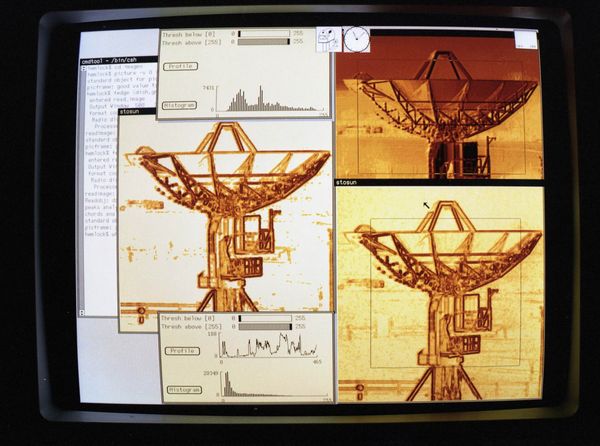

Although not part of the Engineering Board programme, it was strongly linked to the work in that area.
IPAL, an Image Processing Algorithm Library, was a collaborative Alvey project in the Man-Machine Interface programme. The collection of algorithms was based on contributions from Alvey projects, astronomy groups at RAL, MRC Edinburgh and many others. New implementations of published algorithms were written. An early decision was taken to generate two distinct libraries (written in Fortran and C) rather than two bindings of the same functions. It was therefore possible to target algorithms at the most appropriate language. In particular, the Fortran library handled two dimensional rectangular arrays of real values whilst C used the more flexible data structures available in that language. This had the effect of putting algorithms for the later stages of processing, where features of images were being processed, into the C library.
Both libraries eventually became part of the NAG Library.
The Fortran library consisted of a set of basic utility routines plus specialist chapters on intensity transforms, geometric transforms and registration, filtering, enhancement and restoration, edge detection, morphological processing and object geometry, segmentation and labelling and on texture analysis. Simple input/ output and GKS interface routines were included to make the library as self contained as possible.
The C library had a more comprehensive set of object geometry routines, reflecting the fact that its major contribution was from the medical area.

Bob Maybury was the main coordinator for the work with technical input from Edwin Hancock and Mike Carter from Informatics and some other RAL staff in other Departments. Kate Crennell developed two example programs, a simple fixed demonstration, DEMOIPAL, and IPALIMS which provided menu-based access to all the IPAL routines. As well as running on a Pyramid and workstations like the Sun, it was also implemented on two different transputer systems using the Parallel Fortran compiler.
The library was first demonstrated by NAG at ITEX at the Barbican in November 1988. The demonstration was written and set-up by Bob Maybury. A limited trial release of the Fortran library started in January 1989 and the C Library was launched later in 1989.
The NAG Image Processing Library was used by the BSI Imaging Panel under IST/31/-/6 as input to the ISO standardisation activities that took place from 1990 onwards.